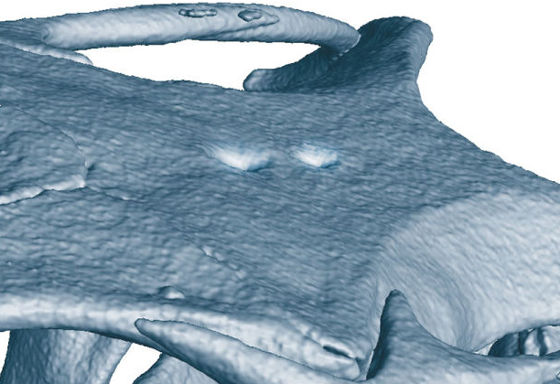The existence of an ancient lizard with a third eye and a fourth eye is reported

The lizard named "Saniwa ensidens" that existed about 49 million years ago had a third eye / fourth eye on the head, Kenster Smith, a child anthropologist from the Senkenberg research institute in Germany and others I understood it through research. It has been reported as a lizard with four eyes for the first time as a mandibular vertebrate.
The Only Known Jawed Vertebrate with Four Eyes and the Bauplan of the Pineal Complex: Current Biology
http://www.cell.com/current-biology/fulltext/S0960-9822(18)30206-9
Here's Why an Ancient Lizard Had 4 Eyes
https://www.livescience.com/62195-ancient-four-eyed-lizard.html
Saniwa ensidensPineal gland· I had the 3rd / 4th eyes on the head where the submacrine gland was present. These eyes were used to recognize the direction and to detect the movement of the sun and feel the 24-hour cycle / 1 year cycle.
Photosensitive pineal matter has been reported in several lower vertebrates that lay eggs on the waterside, such as fish and frogs. Despite discussion as to whether the term "eye" is appropriate, researchers call the parietal eye of the lower vertebrate "third eye". In the group of various vertebrate animals such as birds and mammals, the third eye disappears and only the lizard in the terrestrial vertebrate continues to hold the third eye. From this, "The third eye of the lizard isSubmarine outbreakDid not we develop from another organ called? Some researchers thought that it was. The theory that the third eye occurred from the pineal gland and the theory that it was generated from the submucus fruit body have been caught as incompatible.
However, with the discovery of Saniwa ensidens with a total of four eyes, with two pineal gland and submarine flesh at the parietal point, it got a hint on solving many years of mystery. The third eye of the lizard was suggested to have a different origin from the third eye of the mandibular vertebrate.
Researchers found a space for the fourth eye to be located at the cranial parietal surface by CT imaging a specimen of Saniwa ensidens collected 150 years ago and creating a 3D image from thousands of images taken. He said that he did. It seems that this was a discovery that researchers did not expect. Through this discovery, the pineal gland and the subglottal fruit body are not paired but arranged side by side, and the third eye of the lizard evolves differently from the third eye of other vertebrates It was also made clear.

In addition, among existing creaturesLampet eelHas a parietal eye.

byNOAA Great Lakes Environmental Research Laboratory
Related Posts:







